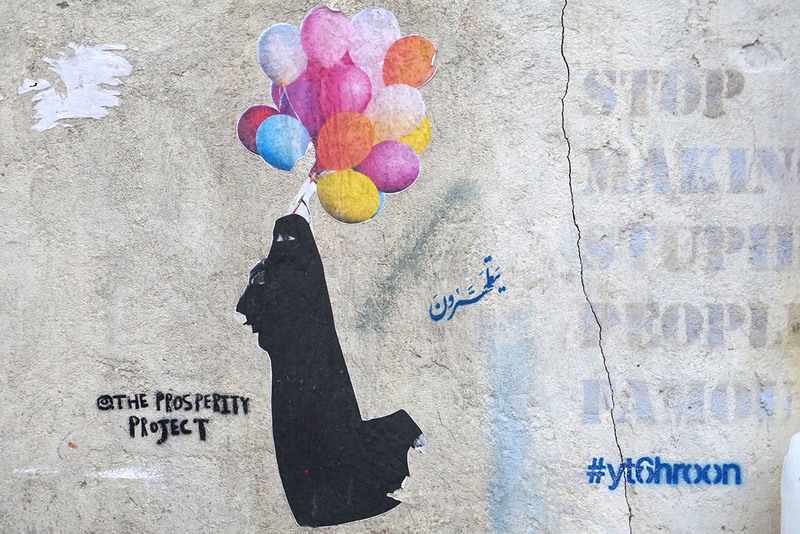Introduction
The proliferation of street art in the Middle East and North Africa, particularly during and in the wake of the Arab Spring of 2011, has been widely documented through social media, websites, news outlets and several published photo essays. Although street art can be defined as any art developed in public spaces, my concern here is with two-dimensional works including graffiti, murals, wheatpasting and so on. Virtually every country in the region has an active street art practice, although the style, quantity and quality of the work vary widely. Countries such as Syria, Iraq and Yemen see somewhat less activity due to the widespread conflict in those areas; however, there is an emerging trend of using street art as a therapeutic tool, particularly with children, including those in refugee camps. The status of street art also varies widely between countries, with some governments labeling the practice as illegal and removing many works once created, some tacitly accepting the art as long as it conforms to certain social and political norms and others actively pursuing and promoting street art as a cultural asset, often to boost tourism and public awareness of the arts community. Likewise, the purpose and themes of the works are different from country to country. I have identified three broad areas of concern which I address in my book Street Art in the Middle East: protest art created by local artists in response to specific political concerns (for example, the street art created during the Arab Spring); politically or socially relevant work created by artists from outside the region, often internationally famous street artists; and work without specific political or social context (what might termed “decorative” street art) created by both local and international artists as part of a cultural program within a city or country.
This exhibition features the illustrations from the book, which were only able to be reproduced as small scale, black and white images in the text.
The book is available through Bloomsbury and Amazon.
